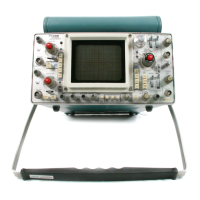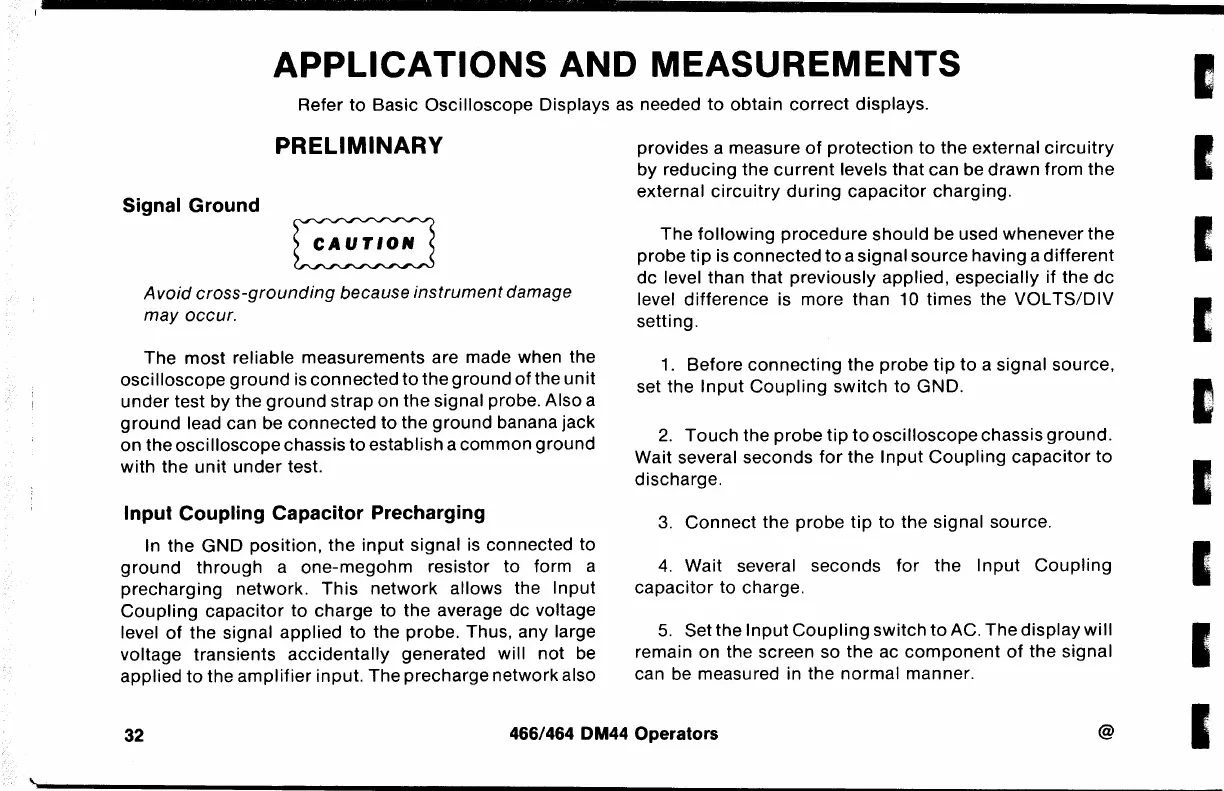APPLICATIONS AND MEASUREMENTS
Refer
to
Basic Oscilloscope Displays
as
needed
to
obtain
correct
displays.
PRELIMINARY
Signal Ground
~
Avoid
cross-grounding
because instrument damage
may occur.
The most reliable measurements are made when the
oscilloscope
ground
is
connected
to
the
ground
of
the
unit
under
test by the
ground
strap on the signal probe. Also a
ground
lead can be connected to the
ground
banana jack
on the
oscilloscope
chassis
to
establish a common
ground
with
the
unit
under
test.
Input Coupling Capacitor Precharging
In the
GND
position,
the
input
signal
is
connected to
ground
through
a one-megohm resistor
to
form a
precharging network.
This
network
allows the Input
Coupling
capacitor
to
charge to the average de voltage
level
of
the signal applied
to
the probe. Thus, any large
voltage transients
accidentally
generated will not be
applied
to
the
amplifier
input. The precharge network also
provides a measure
of
protection
to the external
circuitry
by
reducing the
current
levels that can be
drawn
from the
external
circuitry
during
capacitor
charging.
The
following
procedure
should be used whenever
the
probe
tip
is connected
to
a signal source having a
different
de level than that previously applied, especially
if
the de
level difference is more than 10 times the VOL
TS/DIV
setting.
1.
Before
connecting
the probe
tip
to
a signal source,
set the
Input
Coupling
switch to GND.
2.
Touch
the probe
tip
to
oscilloscope
chassis
ground.
Wait several seconds
for
the
Input
Coupling
capacitor
to
discharge.
3.
Connect
the probe
tip
to the signal source.
4.
Wait several seconds
for
the
Input
Coupling
capacitor
to charge.
5.
Set the
Input
Coupling
switch
to
AC.
The
display
will
remain on the screen so the ac
component
of
the
signal
can be measured in the
normal
manner.
32
466/464 DM44 Operators
@
I
I
I
I
I
~
I
I

